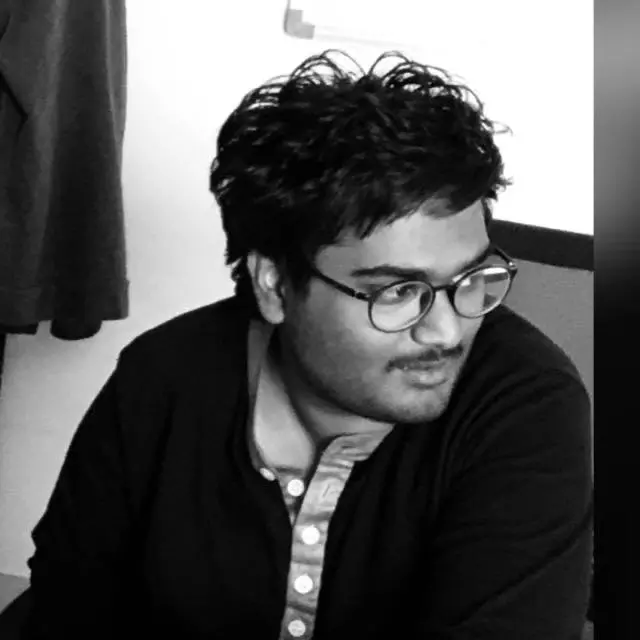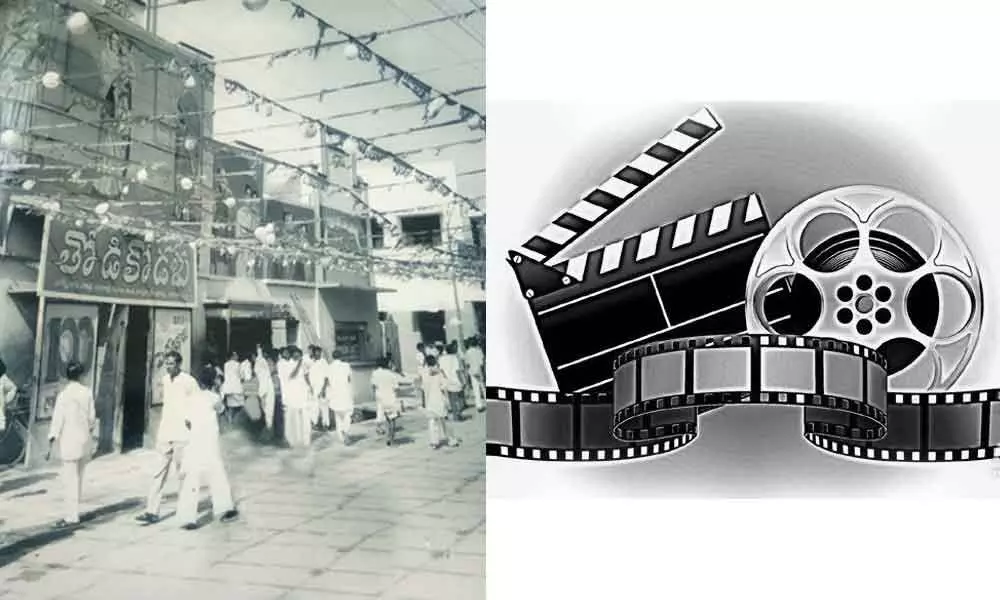Live
- SBI rescues sr citizen from `46L cyber fraud
- 12-yr-old dies of electrocution
- Installation of smart meters opposed
- State Cabinet expansion in focus as CM leaves for Delhi
- Need to reintroduce country’s forgotten pride: Bhagwat
- Pant shatters Iyer's IPL auction record, sold to Super Giants for Rs 27 cr
- Yuva Sangeetha Sammelanam held
- Dharani proves a bane for 25K families across State
- Reckless, Dangerous Arms Race
- Russia needs a peace deal as it is running out of soldiers
Just In
The Inception Of The Telugu Film Industry!


The Inception of the Telugu Film Industry
Built by rebels who left their certain occupations, the genesis of the Telugu Film Industry is a fascinating tale to recall
Built by rebels who left their certain occupations, the genesis of the Telugu Film Industry is a fascinating tale to recall. The three rebels namely, Raghupathi Venkaiah Naidu, H.M. Reddy and LV Prasad along with the literary power of a stalwart like Dharmavaram Ramakrishnamacharyulu, built the foundational basis of the Telugu Film Industry.
Yet the seeds of the industry were extremely humble, unlike Hollywood which branched off with films of the silent era in exquisite and flamboyant studios. Or Hindi cinema, which had large scale productions and sets.
Telugu Film Industry mostly borrowed its creative aspects of Misè Eń Sćen of framing shots, of directional blocking and performance from its rich literary tradition and dramatic tradition. Its productional characteristics though reeked more of jugaad (running spontaneously accordingly to circumstances.)
The first silent Telugu Bhisma Pratigana made in 1921 by Raghupati Venkiah Naidu, produced from a humble studio he established named Glass Studio. Venkiah had gotten into filmmaking, after pawning his only source of income a still photography studio in Machilipatnam in 1909 to purchase a chronophone, that enabled video motion and sound to be projected and exhibited together, a key instrument necessary to project any silent film.
Such was his sheer passion, he pawned his living for the love of cinema, and began exhibiting silent films from Hollywood building the first film theatre owned by an Indian in Chennai. He soon established a chain of film theatres, using his profit to send his son, Raghupati Surya Prakash Naidu to London to study cinematography and cinema further. It was the fruitful joint venture of Venkiah and his son that give birth to the first silent Telugu film, Bhisma Pratigana!
This year marks the centenary year of Bhisma Pratigana; it was Bhisma Pratigana that marked the inception of the Telugu film industry. Raghupati later died in utter and absolute poverty due to debts; he had to sell everything he owned for cinema! His passion for filmmaking was self-destructive for him, but it was only his passion as a young rebel that ushered in the revolution of cinema into the lives of every Telugu! [1]
Another humble rebel was H.M. Reddy; the legendary filmmaker made the first sound film in Telugu Bhakta Prahalada. H.M. Reddy was another passionate filmmaker, who quit his job as a Police Inspector in Bangalore as he loathed working for the British colonial government, and went to work for Ardeshir Irani's Alam Ara the first Indian talkie film as an assistant director. Reddy made Bhakta Prahalada, based on a play written by the legendary playwright Dharmavaram Ramakrishnamacharyulu into a feature film on the leftover set of Alam Ara in seven to eight days!
Such was the humble nature of Telugu Film Industry's first sound film made in less than eight days, on a leftover set! H.M. Reddy was an epitome of passion, and he neither required years and years to make a film, nor a great picturesque set. The dialogues and lyrics of the film were written by Telugu Film Industry's Chandala Keshavadasu another legendary playwright from the golden age of Telugu theatre.
The film, though made in humble origins, was a massive hit with people crowding the theatres in Madras, and with stemming out of trains, in large numbers to visit the grand spectacle. It was nothing less than that of a festival. It garnered the same astounding response as HM Reddy's other venture Kalidasa, a talkie film with dialogue in Telugu, Tamil and Hindi! A film that had songs cryptically supporting the Indian Freedom Struggle and showcasing Gandhi's symbolism! [2]
The biggest tragedy now though. Is the fact that both these films have been lost over time. There are no prints of either of these films today! While the industry has now progressed into a multi-crore industry, the second biggest in India. It has left behind its foundational bases.
With releases across the world! The only humble feeling of gratitude, perhaps filmmakers and the audience can extend to these passionate filmmakers who sacrificed their lives for cinema is recognition and remembrance of their inspirational journeys of life!
REFERENCES:
[1] [2]:
https://books.google.co.in/books/about/History_of_Indian_Cinema.html?id=XAT4AgAAQBAJ&redir_esc=y

© 2024 Hyderabad Media House Limited/The Hans India. All rights reserved. Powered by hocalwire.com






